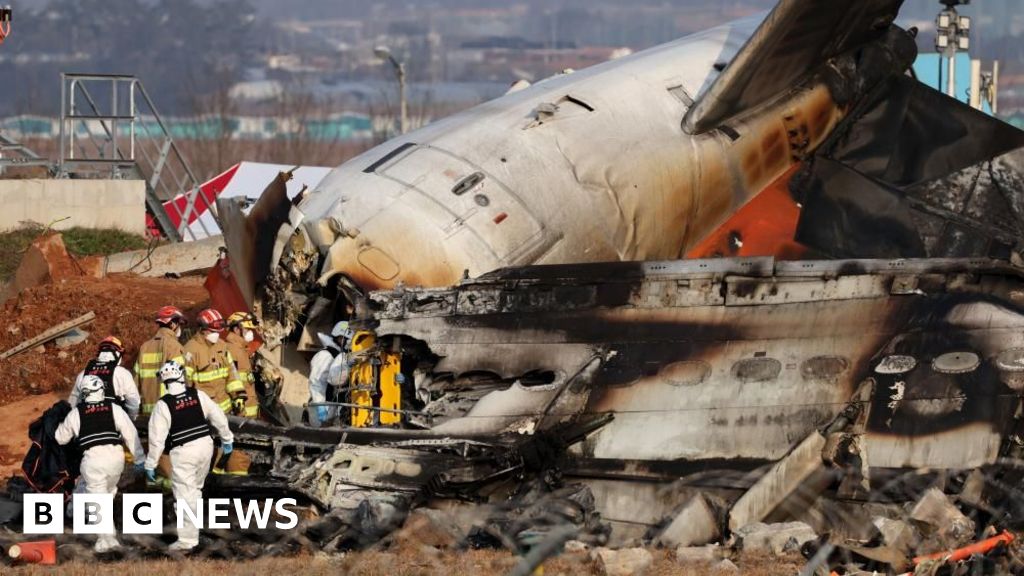- cross-posted to:
- [email protected]
- [email protected]
- cross-posted to:
- [email protected]
- [email protected]
cross-posted from: https://rss.ponder.cat/post/81292
This crash is very strange to me. No flaps (even if hydraulics fail, there’s electrical backup), no gear (there’s gravity extension backup), landed way down the runway (9000’ should have been plenty, gear up landing has been done in shorter distances)… what happened?
My guess at the moment: bird strike made the pilots panic, they didn’t ensure the plane was in the correct configuration when attempting the second landing, and tried to put it down soft and ended up going long?
What do I know though, I’m not a pilot, just a fan of disasters and flight simulation. Guess I’ll have to see what blancolirio has to say.
Edit: Juan Browne, aka Blancolirio on YouTube finally posted a video on this, probably some of the best insight we’ll get at this early stage.
I don’t know enough to say if it’s a valid theory, but I saw one commenter suggest this scenario:
- Bird strike takes out 1 engine.
- Wrong engine is shut off by the pilots by mistake (now both engines aren’t operating)
- Without engine power, hydraulic systems stop working properly
- Pilots realize their mistake too late while trying to do a go around, try to land instead farther down the runway since they can’t climb.
I’m inclined to believe hydraulics were functioning based on the stabilized approach. The recent Azeri plane crash is what it looks like when you have no hydraulics. Granted, different planes, 737 NG has manual control, but it’d be difficult. Aside from a little shimmy the approach was good, especially considering they whipped a 180 after that first landing attempt on runway 01. The plane seemed to be well in control.
Also of note, there doesn’t appear to be any rudder applied on the approach, so one engine out seems to not be the case. They also tracked straight down the centerline so no asymmetric thrust. This would imply they either had both engines or no engines. I’m hesitant to believe both engines were out due to the speed they had after scraping down the runway, with the nose in the air.
I’m wondering if they got task saturated after the bird strike and quick go around 180, didn’t hear the “too low, gear” warning, then got spooked from the scrape and attempted a go around like that PIA crash. The initial tail strike happened way earlier on the runway, they floated for a long time after that initial contact.
Altogether very strange. Definitely a lot of Swiss cheese holes aligning in a terrible way. Very curious to see what’s recovered from the FDR and CVR.
Way too fast as well it looks like. Maybe both engines failed and it was the last possibility to get it down. RIP. Last moments must have been awful, especially for the pilots who saw that wall coming …
I don’t think whatever electrical backup has enough power to deploy flaps at landing or near landing speeds.
737 NG alt flaps work up to 230 knots, well above landing speed. Landing with hydraulics out is the primary function of the alt flaps system. It’s really slow, however, so flaps 15 is typically the most they use.
I didn’t find the speed rating for the alt flaps, but I was able to verify that it is an electrical system backup
There’s a placard in the cockpit with flap speed limits.
You know what? I like the C152 better. It’s color coded around the speedometer.
That’s unfortunate if true
Looks like I’m wrong.
Not a 737 Max, but again, another Boeing plane whereas I haven’t seen a fatal airbus accident in ages. It may not have been the plane at all and may have completely been pilot error, but still doesn’t look great to see another fatal 737 accident
I’m wondering if they were even able to setup properly for the second landing. Assume competent pilots and the wheels, flaps, and reversers cannot deploy. Was the second engine even actually working? The video we have is them already on the ground. So it makes me wonder if we’re looking at the alternate scenario of having landed in the Hudson.
Definitely a strange crash, although it sounds like there was some mechanical stuff going on as a result of multiple bird strikes on the previous approach.
Lots of airports around the world have EMAS which is designed to stop an airplane in this situation. Unfortunately this airport has a concrete wall instead. Google maps has it labeled as “Walls of death”, although I don’t know if that was recently added or if they’ve had that nickname for a while. https://maps.app.goo.gl/eX9Fp9RXeVkRB94L9
EMAS requires a certain pressure to break through the surface. It’s designed for gear down overruns, not belly landings. I don’t think it’d do much if it were installed in this case.
From skybrary.aero:
Additional assumptions for all designs are that:
- an aircraft is still attempting to stop as the runway is exited
- reverse thrust / reverse pitch is not being used as the runway is exited
- the surface area leading to the EMAS bed has poor braking characteristics
- there is minimal or no structural damage to the landing gear
- there is no aircraft braking or use of reverse thrust / reverse pitch once an aircraft enters the EMAS
That penultimate point is key. It’s not designed for a no gear landing, or even damaged gear landing. It adds friction by the gear sinking into the materials.
Typically yeah, but I think there was likely enough weight on the engine cowls to make the engines dig in to EMAS. I wonder if it has ever been tested.
Certainly wouldn’t have hurt, but I don’t think it would have done that much.
From skybrary:
Most installations to date have used a maximum 70 knots bed-entry speed.
…and thats with gear down. I believe the Jeju plane was doing something like 130+ kts off the end of the runway.
The world’s brick laying standards have now been updated to "when asked to build a brick, stone or cement concrete by an airport agency to be located at the end of the roadway, you are legally and morally bound to beat the living bejisus out of whoever’s idea that was.
It’s not a “strange” crash. It’s yet another Boeing crash.
But capitalist media isn’t going to put that in the headline.
Boeing has like 40% of the commercial airline market. It being a Boeing plane does not automatically mean it’s Boeing’s fault. Now I won’t defend Boeing here, they’re a shell of their former self and a piece of shit manufacturer nowadays. But this plane was made like 15 years ago. It could easily be up to maintenance from the airline, or other circumstances like bird strike.
Hello, Mr. Edgy. Do you have any reliable source showing this is a design flaw with that aircraft type?
Removed by mod
According to this article, there does not appear to be an attack at play.





